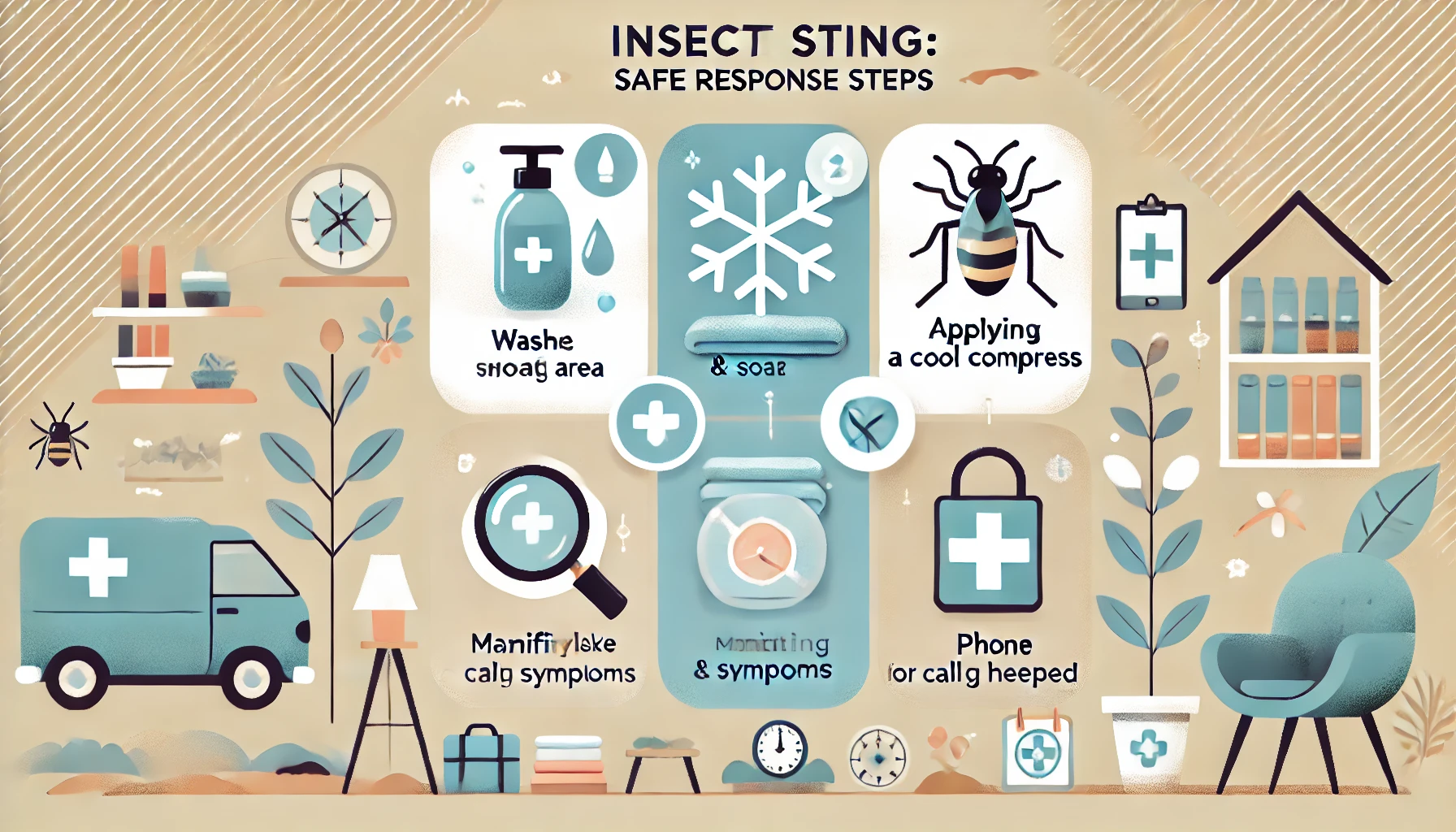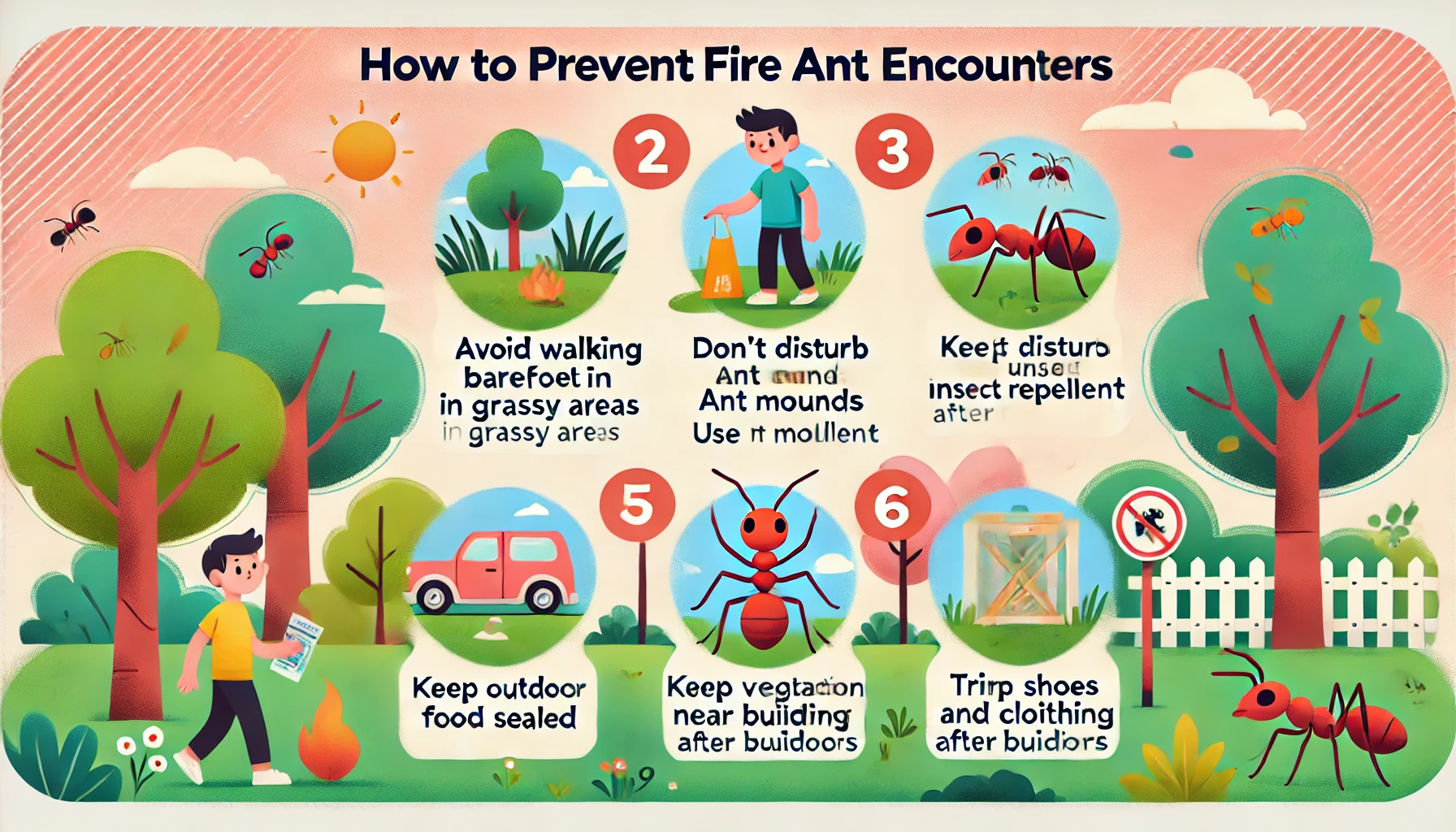Key Takeaways
- Fire ants sting aggressively and repeatedly.
- Stings cause immediate burning, swelling, and itchy blisters.
- Severe allergic reactions require emergency care.
- Effective first aid includes immediate cleaning, ice application, and medication for pain and itching.
- Prevention involves recognizing mounds, wearing protective clothing, regular yard maintenance, and possibly professional pest control.
- Extra vigilance is crucial for protecting children and pets from fire ant stings.
 If you’ve ever experienced the painful sting of fire ants, you know why these tiny insects have earned their fierce reputation. Common throughout southern states, fire ants aggressively defend their colonies, leaving victims with painful bites and stings. Identifying and treating these stings quickly can significantly ease discomfort and reduce health risks.
This guide explores everything US households should know about fire ant bites and stings, including symptoms, treatment options, and practical prevention strategies to keep you and your family safe.
If you’ve ever experienced the painful sting of fire ants, you know why these tiny insects have earned their fierce reputation. Common throughout southern states, fire ants aggressively defend their colonies, leaving victims with painful bites and stings. Identifying and treating these stings quickly can significantly ease discomfort and reduce health risks.
This guide explores everything US households should know about fire ant bites and stings, including symptoms, treatment options, and practical prevention strategies to keep you and your family safe.


Not getting a solution?
Get your free pest control estimate today!Identifying Fire Ants and Their Habits
Fire ants contain small, red-brown ants that live in loose earthen mounds, usually found in lawns, gardens, parks or playgrounds. Two common species, red imported fire ant and black imported fire ant, most cause stings in the US. These ants originate from South America and have become an aggressive insect in the southern United States. When disturbed, these aggressive ants exit their nests, quickly climb the intruders and give many stings within seconds. Unlike bees, fire ants can repeat repeatedly, inject the poison that causes acute pain and specific skin reactions. They usually build their nests in sunlight, open areas and often be found near the foundation of pavements, driveways and buildings.
What Does a Fire Ant Sting Look and Feel Like?
Immediately after being stung, you’ll feel a sharp, burning pain—this is why they’re called “fire ants.” The sting area typically turns red and swollen within minutes. Within a few hours, minor white blisters (pustules) filled with fluid appear on the skin, surrounded by redness and swelling. These blisters are characteristic of fire ant stings and can be very itchy. Common symptoms include:- Immediate sharp burning sensation
- Redness and swelling around the sting
- Formation of itchy, white blisters
- Discomfort lasting several days

Recognizing Severe Allergic Reactions
Though rare, severe allergic reactions (anaphylaxis) to fire ant stings can occur. These reactions happen rapidly, typically within minutes or an hour after the sting. Seek emergency medical care immediately if you or someone else experiences:- Difficulty breathing or shortness of breath
- Swelling of the throat or tongue
- Dizziness, confusion, or fainting
- Nausea, vomiting, or diarrhea
- Rapid heartbeat, weakness, or faintness
First Aid for Fire Ant Stings
- Proper first aid can ease pain and speed up healing. Following these simple steps can significantly reduce discomfort and prevent complications:
-
Move Away Quickly: Leave the area immediately and brush ants off your skin—don’t slap, as it can worsen stings.
-
Wash the Area Thoroughly: Clean the sting site with soap and cool water to reduce venom and infection risk.
-
Apply Ice Packs: Use a cloth-wrapped ice pack for 15 minutes to ease swelling and pain. Repeat as needed.
-
Manage Itching and Swelling: Apply hydrocortisone cream, take antihistamines or NSAIDs like ibuprofen for relief.
-
Avoid Scratching Blisters: Don’t pop blisters. If one breaks, clean it gently and apply antibiotic ointment.
-
Watch for Infection: Monitor for increasing redness, swelling, or pus. Seek medical care if symptoms worsen.

Practical Tips to Prevent Fire Ant Stings
- Protecting yourself and your family from fire ants is more straightforward than managing stings. Here are essential prevention tips to help you avoid painful encounters:
-
Identify and Avoid Mounds: Teach kids to recognize dome-shaped mounds of loose soil and keep away.
-
Wear Protective Clothing: Wear long pants, socks, and closed-toe shoes when in grassy or garden areas.
-
Maintain Your Yard: Mow regularly, clear debris, and apply fire ant baits or pesticides as directed.
-
Hire Professionals: Consider expert pest control if fire ants are a recurring issue for safe and thorough removal.
Keeping Children and Pets Safe
- Fire ants pose particular risks to children and pets, who might unknowingly disturb nests. Young children playing outdoors are especially vulnerable. To safeguard them, consider these strategies:
-
Supervise Outdoor Playtime: Watch kids closely when they play outside, especially in areas with known ant activity.
-
Proper Footwear: Always ensure children wear socks and closed-toe shoes outdoors to protect their feet.
-
Check Pets After Outdoor Activities: Inspect pets for ants, especially on their paws and bellies. Contact your vet if stung.
 Understanding fire ant behavior, swiftly administering proper first aid, and implementing practical prevention methods can significantly reduce the risks and discomfort associated with these fierce insects.
Understanding fire ant behavior, swiftly administering proper first aid, and implementing practical prevention methods can significantly reduce the risks and discomfort associated with these fierce insects.
If you feel things have gone out of control, it is advised to contact pest control professionals. Our team can provide a customized approach to protect your home effectively.
Visit our Species, Control, and DIY Guide sections for additional resources on fire ant and ways to tackle a fire ant infestation.





